This content originally appeared on Democracy Now! and was authored by Democracy Now!.
This post was originally published on Radio Free.
This content originally appeared on Democracy Now! and was authored by Democracy Now!.
This post was originally published on Radio Free.

Reporters, workers and now judges across the country are disputing the cost-cutting claims of Elon Musk’s so-called Department of Government Efficiency, which has targeted federal employees across multiple sectors with firings, forced resignations and threatened layoffs. One of the millions of Americans being impacted by DOGE’s draconian measures is Latisha, an employee at the Department of Veterans Affairs who spoke with Democracy Now! in a personal capacity and not on behalf of her employer. She says that Musk’s recent demand ordering federal employees to email a summary of their work from the past week was “insulting” and “disrespectful,” and that “his real goal is to gut public services in the federal workforce and pave the way for privatization of public services, goods and programs that we all need and love.” She outlines how Black Americans and veterans, who are disproportionately represented among the ranks of federal workers, are being particularly affected by these cuts. We also speak to ProPublica editor-in-chief Stephen Engelberg about his recent reporting on a “clearly wrong, clearly disproved” statistic being cited by the Trump administration about the number of federal employees who are working remotely. The statistic is being used to justify the “king-like powers” claimed by Trump and the nepotistic hires at DOGE, says Engelberg.
This content originally appeared on Democracy Now! and was authored by Democracy Now!.
This post was originally published on Radio Free.
Donald Trump has been flayed alive by Western media and leaders for saying Ukraine started the war. Here are facts, not myths.
The post Yes, Ukraine Started The War appeared first on PopularResistance.Org.
This post was originally published on PopularResistance.Org.
PNG Post-Courier
Prime Minister James Marape has issued a strong appeal to all young men and boys in Papua New Guinea — stop abusing girls, mothers, and sisters.
He made the plea yesterday before flying to Australia, emphasising the importance of respecting women and children in society.
Marape urged young men to take their issues to him instead of resorting to violence against women and children.
Marape also called for the nation to rise in consciousness to preserve the values and achievements of their fathers and mothers who fought for independence 50 years ago.
“We want to give a special recognition to the fathers and mothers of our country, a generation and people of our country to be proud to be here today,” he said.
He expressed his pain at seeing the continued cycle of abuse and disrespect towards women and children in the country.
Marape’s message was clear: violence and abuse towards women and children would not be tolerated, and the nation must come together to ensure the safety and well-being of all its citizens.
‘Don’t do it to our sisters’
“These are not two things that we want to take on. For every young boy out there, if you have an issue in society, I don’t mind you taking it upon me. But please don’t do it to the girls in the neighbourhood,” he said.
“Don’t do it to our sisters in the neighbourhood. Don’t do it to our mothers and aunties in the neighbourhood.
“In a time when our nation is facing a 50th anniversary, I call for our nation to rise in a consciousness to preserve what our fathers and mothers did 50 years ago.
“Lawlessness, disrespect for each other, especially women and children amongst us. This is something that I speak at great lengths and speak from the depth of my heart.
“It pains me to see girls, women, and children continue to face a vicious cycle of abuse and total abhorrence, abuse of children, rape,” he said.
“I just thought these are important activities coming up. I want to conclude by asking our country through the media.
“We are in another state of our 50th anniversary year.
‘Let us take responsibility’
“We have many challenges in our country. But all of us, we take responsibility of our country. As government, we are trying our absolute best.
“Citizens, public servants, private sector, all of us have responsibility to our country. Unless you have another country to go and live in, if property is your country in the first instance, I call out to all citizens, take responsibility in your corner of property.
“Privacy alone cannot be able to do everything that you expect it to do.
“I’m not omnipotent. I’m not omniscient. I’m not omnipresent.
“I’m but only one person coordinating at the top level. Call for every citizen of our country.
“As we face our 49th year and as we welcome our 50th of September 16,) we call this on every one of us.”
Republished from the PNG Post-Courier with permission.
This post was originally published on Asia Pacific Report.
The Washington Post won’t say why it cancelled a six-figure ad buy calling for Elon Musk to be fired, but it’s likely the same reason the Post insisted Musk wasn’t Nazi-saluting on Inauguration Day, and why the paper killed its endorsement of Kamala Harris: because that’s what Jeff Bezos wants.
In addition to owning the Post, Bezos is the founder of Amazon and currently the world’s third-richest human. At best, the Post is a side-hustle for Bezos, while Amazon and his other business pursuits are what truly animate him. “With Jeff, it’s always only about business,” a former employee of Bezos’s space company, Blue Origin, told the Post.
The post The World’s Richest People Look Out For Each Other appeared first on PopularResistance.Org.
This post was originally published on PopularResistance.Org.
By Gizem Nisa Cebi
The BBC has removed its documentary Gaza: How to Survive a Warzone from iPlayer after it was revealed that its teenage narrator is the son of a Hamas official.
The broadcaster stated that it was conducting “further due diligence” following mounting scrutiny.
The film, which aired on BBC Two last Monday, follows 13-year-old Abdullah Al-Yazouri as he describes life in Gaza.
However, it later emerged that his father, Ayman Al-Yazouri, serves as the Hamas Deputy Minister of Agriculture in Gaza.
In a statement yesterday, the BBC defended the documentary’s value but acknowledged concerns.
“There have been continuing questions raised about the programme, and in light of these, we are conducting further due diligence with the production company,” the statement said.
The revelation sparked a backlash from figures including Friday Night Dinner actress Tracy-Ann Oberman, literary agent Neil Blair, and former BBC One boss Danny Cohen, who called it “a shocking failure by the BBC and a major crisis for its reputation”.
On Thursday, the BBC admitted that it had not disclosed the family connection but insisted it followed compliance procedures. It has since added a disclaimer acknowledging Abdullah’s ties to Hamas.
UK’s Culture Secretary Lisa Nandy said that she would discuss the issue with the BBC, particularly regarding its vetting process.
However, the International Centre of Justice for Palestinians urged the broadcaster to “stand firm against attempts to prevent firsthand accounts of life in Gaza from reaching audiences”.
Others also defended the importance of the documentary made last year before the sheer scale of devastation by the Israeli military forces was exposed — and many months before the ceasefire came into force on January 19.

‘This documentary humanised Palestinian children’
Chris Doyle, director of the Council for Arab-British Understanding (CAABU), criticised the BBC’s decision.
“It’s very regrettable that this documentary has been pulled following pressure from anti-Palestinian activists who have largely shown no sympathy for persons in Gaza suffering from massive bombardment, starvation, and disease,” Middle East Eye quoted him as saying.
Doyle also praised the film’s impact, saying, “This documentary humanised Palestinian children in Gaza and gave valuable insights into life in this horrific war zone.”
Journalist Richard Sanders, who has produced multiple documentaries on Gaza, called the controversy a “huge test” for the BBC and condemned its response as a “cowardly decision”.
Earlier this week, 45 Jewish journalists and media figures, including former BBC governor Ruth Deech, urged the broadcaster to pull the film, calling Ayman Al-Yazouri a “terrorist leader”.
The controversy underscores wider tensions over media coverage of the Israel-Gaza war, with critics accusing the BBC of a vetting failure, while others argue the documentary sheds crucial light on Palestinian children’s suffering.
Pacific Media Watch comments: The BBC has long been accused of an Israeli-bias in its coverage of Palestinian affairs, especially the 15-month genocidal war on Gaza, and this documentary is one of the rare programmes that has restored some balance.

This post was originally published on Asia Pacific Report.
One of the leading Middle East’s leading political and media analysts, Marwan Bishara, has accused President Donald Trump of applying a doctrine of ‘strategic coercion” and “economic blackmail” in his approach to the Gaza ceasefire.
Bishara, senior political analyst of the Doha-based Al Jazeera global television network, was responding to the news that Trump has apparently backed off his plan for expelling more than 2 million Palestinians from their Gaza homeland and to redevelop it as the “Riviera of the Middle East”.
He has now been describing it as a “recommendation” that would not be enforced.
“The idea that Trump starts with [about taking over Gaza] is mad. But there is a method to the madness,” Bishara said.
“The method to the madness, you can see it in the context of Trump’s doctrine, if you will – and that is strategic coercion and economic blackmail.
“In fact, he started his administration by inviting [Israeli Prime Minister] Netanyahu to Washington, blessing him with all kinds of support . . . and blackmailing Egypt and Jordan into accepting two million refugees, or else — and then asking them to come up with something else.”
Bishara said he expected the Trump doctrine to be applied elsewhere in the world, such as with his efforts to end the war in Ukraine.
‘This kind of strategic coercion of Arab countries on behalf of the United States and Israel, and economic blackmail — I think we’re going to see it as part of the Trump doctrine throughout the world.
President Trump’s walkback on his “Riviera” plan for Gaza. Video: Al Jazeera
‘Surprised’ over opposition
The US president had said in a radio interview with Fox News that he was “a little bit surprised” that Jordan and Egypt had voiced opposition to his plan to “take over” Gaza and displace Palestinians.
“I’ll tell you, the way to do it is my plan — I think that’s the plan that really works,” Trump said.
“But I’m not forcing it, I’m just going to sit back and recommend it.
“And then the US would own the site, there’d be no Hamas, and there’d be development and you’d start all over again with a clean plate.”
A former Egyptian deputy foreign affairs minister to the European Union, Gamal Bayoumi, said the “informal” meeting in Riyadh, Saudi Arabia, of the leaders of several Arab countries to discuss an Egyptian counterproposal had led to the softening of Trump’s stance.
Speaking from Cairo, Bayoumi said Trump had appeared “inexperienced concerning international law” and the Middle East, saying the US president’s plan “has no logic . . . to ask the Palestinians to leave their own country.”
The Riyadh meeting has ended with the leaders rejecting Trump’s plan and the Arab League will meet in Cairo, Egypt, on March 4 to discuss the counterproposal in more detail.
This post was originally published on Asia Pacific Report.
Washington, D.C., February 21, 2025—The Committee to Protect Journalists condemns the blocking of Egyptian independent media outlet Zawia3, based in Brussels, and calls on Egyptian authorities to end the country’s systematic censorship of independent journalism.
“The blocking of Zawia3 is yet another example of Egyptian authorities arbitrarily censoring media without legal justification, using technology to suppress journalism and restrict Egyptians’ access to information,” said CPJ Program Director Carlos Martinez de la Serna. “Targeting a media outlet based abroad is a clear act of transnational repression. Egypt’s telecommunications service providers should recognize that their services are being weaponized to silence independent media.”
In a statement posted online, Zawia3 said it noticed network disruptions on February 15, with independent experts confirming on February 19 that the outlet’s site had been blocked in Egypt by an “unknown entity.” According to Zawia3, the blocking was executed using a “reset attack,” which disrupts connections.
Ahmed Gamal Ziada, editor-in-chief of Zawia3 and a Brussels-based Egyptian journalist, told CPJ, “We are conducting investigative journalism on Egypt, and independent investigative reporting is not welcomed by those who fail to understand its role in exposing corruption and promoting accountability.”
Egyptian authorities under President Abdel Fattah El-Sisi have used various transnational repression tactics to target journalists and human rights defenders. In August 2023, Ziada’s father was arrested in Egypt and questioned about his son’s journalism during interrogations. He was later released in September 2023 after being accused of using social media to spread false information.
Egypt has a history of blocking independent media, blocking Egyptian news site Cairo 24 in November 2024.
CPJ emailed Egypt’s Supreme Council for Media Regulation for comment on Zawia3 but did not receive any reply.
This content originally appeared on Committee to Protect Journalists and was authored by CPJ Staff.
This post was originally published on Radio Free.

In 2014, Belle Gibson was at the height of her success. She had built a wellness empire around her app and cookbook, The Whole Pantry, claiming to have cured her terminal brain cancer through natural healing and healthy eating. But there was just one problem—it was all a lie. She didn’t have brain cancer, and she certainly didn’t heal the disease with healthy food. A decade later, Gibson remains one of the wellness industry’s most notorious scammers. Her story is covered in Netflix’s new series Apple Cider Vinegar, which hit the streaming platform in early February.
While the series—which is based on the book The Woman Who Fooled the World—takes creative liberties, the core truth remains: Gibson was a fraud who knowingly misled thousands to believe they could cure serious diseases with food. However, the wellness culture of the 2010s that enabled Gibson to fool masses of people has not gone away. If anything, it is stronger and more influential than ever before.
Another central plot point of Apple Cider Vinegar revolves around fictional wellness influencer Milla Blake, who, unlike Gibson, really does have cancer. Like Gibson, however, she promotes natural therapies instead of modern treatment and turns to a type of therapy called Hersch to heal herself.
 Netflix
Netflix
Hersch is fictionalized, but it has much in common with the real-life Gerson program, which, to this day, advises a mix of juicing, coffee enemas, and a vegetarian diet to treat diseases like cancer. The Gerson Institute was founded more than 40 years ago by physician Max Gerson. It has two treatment clinics, one in Tijuana, Mexico, and another in Budapest, Hungary.
Cancer Research UK says of Gerson therapy: “There is no scientific evidence to use it as a treatment for cancer.”
It adds: “Many websites are advertising or promoting Gerson therapy. However reputable scientific cancer organizations do not support them. Do not believe information or pay for alternative cancer therapy over the internet.”
Apple Cider Vinegar effectively showcases how dangerous wellness misinformation can be—not just through Gibson’s lies, but also through Blake’s unwavering belief in alternative treatment methods, which ultimately prove to be unsuccessful.
Spoiler alert: such treatments ultimately cost Blake her life. “I thought the show did a phenomenal job at portraying how someone can be both the victim and the perpetrator of dangerous and misleading health advice,” says Mallory DeMille, a social media correspondent for the Conspirituality podcast, in a video on Instagram.
Every day, TikTok churns out videos from individuals who claim things like okra water can make your hair grow faster and transform your skin health, eating nothing but sardines can boost your metabolism, and consuming raw meat will give you more energy than ever before. Most of these claims have been debunked by experts, and yet, they still gather thousands, if not millions of views, thanks to increasingly sophisticated algorithms. Hover on one carnivore diet-promoting video for too long, and you will be inundated with similar videos from unqualified influencers claiming that vegetables aren’t necessary for health.
In 2024, one survey from Zing Coach suggested that more than half of Gen Z TikTok users turn to the app for health and wellness advice. In the same year, a report from Tebra found that 45 percent of medical advice on the app is either false or misleading. Alternative therapies were among the worst categories of content, with 67 percent of posts dubbed as misleading.
“I really hope that Apple Cider Vinegar reignites a conversation about the dangers of taking medical advice from wellness influencers who are really just trying to sell you something,” says DeMille.
Even more concerning, the Gerson Institute and the belief that cancer can be cured with enemas and juicing are also still taking up space in the wellness world. “It’s been 10 years since [Gibson’s] story broke, and I can tell you as someone who has dedicated pretty much their entire platform to talking about the wellness industry and the influencers who market it, that these alternative cancer influencers are still around,” says DeMille, who says coffee enemas, for example, are becoming mainstream. “They are still around in a big way.”
It’s also important to remember when you’re scrolling through TikTok or Instagram that, right now, just as it did for Gibson in the mid-2010s, wellness sells. Influencing is a business, and like fashion, beauty, or home influencers, wellness influencers rely on sponsorship deals and ads to make money.
 Netflix
Netflix
Both the fictional Hersch program and the real-life Gersch Institute promote the belief that cutting out animal products will help cure cancer. It’s worth reiterating that there is no scientific evidence to back this up.
There is, however, plenty of research that suggests that eating more plant-based, whole foods and reducing meat consumption may help to reduce the risk of diseases like cancer developing. Processed meat, for example, is classified by the World Health Organization as a Group One carcinogen, which means it is known to cause cancer. Red meat is Group Two, which means it likely causes cancer. Plant-based whole foods, on the other hand, are rich in antioxidants and anti-inflammatory compounds that may help to reduce the risk of the disease.
“Many aspects of a healthy, balanced vegetarian and vegan diet align with our Cancer Prevention Recommendations,” states the World Cancer Research Fund. “These include eating a variety of plant-based foods like whole grains (like brown rice), pulses, fruit, and vegetables while limiting red meat and avoiding processed meats such as bacon and ham.”
 Pexels
Pexels
To be clear: eating more plant-based, whole foods is by no means a guarantee that an individual will not get cancer. Research only suggests that doing so may reduce the risk. Other factors, like giving up smoking, reducing alcohol intake, and exercising more regularly, may also help to reduce the risk of cancer, research indicates.
“Switching to a plant-based diet can be a wise choice for reducing the risk of certain cancers,” Australian dietitian and doctor of food and nutrition Shy Vishnumohan, PhD, previously told VegNews. “However it is important to bear in mind that multiple factors contribute to cancer risk, including genetics, lifestyle habits, and environmental factors.”
Importantly, Vishnumohan is talking about prevention—not cure. “[Diet] is just one part of a larger picture of wellness. Life is like a stack of cards,” she said. “While there is no magic bullet that will guarantee 100-percent immunity, making healthy food choices that are plant-forward can be powerful and stack the deck in our favor.”
This post was originally published on VegNews.com.
A New Zealand-based community education provider, Dark Times Academy, has had a US Embassy grant to deliver a course teaching Pacific Islands journalists about disinformation terminated after the new Trump administration took office.
The new US administration requested a list of course participants and to review the programme material amid controversy over a “freeze” on federal aid policies.
The course presentation team refused and the contract was terminated by “mutual agreement” — but the eight-week Pacific workshop is going ahead anyway from next week.

“As far as I can tell, the current foreign policy priorities of the US government seem to involve terrorising the people of Gaza, annexing Canada, invading Greenland, and bullying Panama,” said Dark Times Academy co-founder Mandy Henk.
“We felt confident that a review of our materials would not find them to be aligned with those priorities.”
The course, called “A Bit Sus”, is an evidence-based peer-reviewed series of classes that teach key professions the skills needed to identify and counter disinformation and misinformation in their particular field.
The classes focus on “prebunking”, lateral reading, and how technology, including generative AI, influences disinformation.
Awarded competitive funds
Dark Times Academy was originally awarded the funds to run the programme through a public competitive grant offered by the US Embassy in New Zealand in 2023 under the previous US administration.
The US Embassy grant was focused on strengthening the capacity of Pacific media to identify and counter disinformation. While funded by the US, the course was to be a completely independent programme overseen by Dark Times Academy and its academic consultants.
Co-founder Henk was preparing to deliver the education programme to a group of Pacific Island journalists and media professionals, but received a request from the US Embassy in New Zealand to review the course materials to “ensure they are in line with US foreign policy priorities”.
Henk said she and the other course presenters refused to allow US government officials to review the course material for this purpose.
She said the US Embassy had also requested a “list of registered participants for the online classes,” which Dark Times Academy also declined to provide as compliance would have violated the New Zealand Privacy Act 2020.
Henk said the refusal to provide the course materials for review led immediately to further discussions with the US Embassy in New Zealand that ultimately resulted in the termination of the grant “by mutual agreement”.
However, she said Dark Times Academy would still go ahead with running the course for the Pacific Island journalists who had signed up so far, starting on February 26.
Continuing the programme
“The Dark Times Academy team fully intends to continue to bring the ‘A Bit Sus’ programme and other classes to the Pacific region and New Zealand, even without the support of the US government,” Henk said.
“As noted when we first announced this course, the Pacific Islands have experienced accelerated growth in digital connectivity over the past few years thanks to new submarine cable networks and satellite technology.
“Alongside this, the region has also seen a surge in harmful rumours and disinformation that is increasingly disrupting the ability to share accurate and truthful information across Pacific communities.
“This course will help participants from the media recognise common tactics used by disinformation agents and support them to deploy proven educational and communications techniques.
“By taking a skills-based approach to countering disinformation, our programme can help to spread the techniques needed to mitigate the risks posed by digital technologies,” Henk said.
Especially valuable for journalists
Dark Times Academy co-founder Byron Clark said the course would be especially valuable for journalists in the Pacific region given the recent shifts in global politics and the current state of the planet.

“We saw the devastating impacts of disinformation in the Pacific region during the measles outbreak in Samoa, for example,” said Clark, author of the best-selling book Fear: New Zealand’s Underworld of Hostile Extremists.
“With Pacific Island states bearing the brunt of climate change, as well as being caught between a geopolitical stoush between China and the West, a course like this one is timely.”
Henk said the “A Bit Sus” programme used a “high-touch teaching model” that combined the current best evidence on how to counter disinformation with a “learner-focused pedagogy that combines discussion, activities, and a project”.
Past classes led to the creation of the New Zealand version of the “Euphorigen Investigation” escape room, a board game, and a card game.
These materials remain in use across New Zealand schools and community learning centres.
This post was originally published on Asia Pacific Report.
The Trump administration’s decision to pause USAID funding has plunged hundreds of so-called “independent media” outlets into crisis, thereby exposing a worldwide network of thousands of journalists, all working to promote U.S. interests in their home countries.
In late January, President Trump—along with help from the head of the Department of Government Efficiency, Elon Musk—began implementing sweeping changes to the United States Agency for International Development (USAID) on the premise that the organization’s promotion of liberal and progressive causes was a gigantic waste of money. The group’s website and Twitter account have disappeared amid widespread speculation that it will cease to exist or be folded into Marco Rubio’s State Department.
The post USAID Falls, Exposing Giant Network Of US-Funded ‘Independent’ Media appeared first on PopularResistance.Org.
This post was originally published on PopularResistance.Org.
The son of jailed pro-democracy media magnate Jimmy Lai has warned that “time is running out” for his father’s health, and called on Britain and the United States to push for his release.
“His body is breaking down … It’s akin to torture,” Sebastien Lai told Reuters ahead of the Human Rights and Democracy summit in Geneva on Feb. 18. “Time is running out for my father.”
Lai, 77, has spent more than 1,500 days behind bars, and is diabetic. He is a British citizen.
In jail since his arrest in December 2020, Lai is currently standing trial for “collusion with foreign forces” under Hong Kong’s National Security Law. He has also been handed separate sentences for lighting a candle and praying for the victims of the 1989 Tiananmen massacre, for irregularities in the use of his newspaper’s office space, and for taking part in the 2019 protests.

Sebastien Lai called on global leaders, including U.S. President Donald Trump — who has pledged to help get Lai out of jail — and British Prime Minister Keir Starmer, to take urgent action, as his father faces his fourth year of solitary confinement.
“We are incredibly grateful that [Trump] said that. It gives us a lot of hope,” Sebastien Lai said, but called for a stronger response from the United Kingdom.
“If (Britain) wants to normalize relations, they shouldn’t normalize citizens being arrested for standing up for democracy,” he said.
The Hong Kong government told Reuters that Hong Kong “strongly disapproves of and rejects misinformation and smearing remarks made by Sebastien Lai,” while China’s permanent mission in Geneva described the claims about Lai’s health as “slanderous.”
Sebastien Lai called on governments to “champion” his father, who decided not to flee the city when Beijing imposed the first of two national security laws in 2020, despite knowing he’d be a target.
RELATED STORIES
China hits back at Washington over call for Jimmy Lai release
Detained Hong Kong media tycoon Jimmy Lai denies foreign collusion
Evidence against Jimmy Lai ‘obtained through torture’: UN expert
Jimmy Lai’s security trial begins in Hong Kong amid international uproar
“He refused to leave,” he told Voice of America. “Six decades after landing on the shore of this island in pursuit of freedom, he decided to stay and stand with his fellow protesters.”
Human rights groups say Lai’s trial is a “sham” and part of a broad crackdown on dissent in Hong Kong that has all but destroyed its reputation as the only place in Greater China where the rule of law and freedoms of speech and assembly were preserved.
In November 2024, a Hong Kong court jailed 45 democracy supporters at the end of the city’s biggest national security trial to date.
Those sentences drew international condemnation and calls for further sanctions on Hong Kong and the expansion of lifeboat visa schemes for those fleeing the political crackdown in the city.
Translated by Luisetta Mudie. Edited by Roseanne Gerin.
This content originally appeared on Radio Free Asia and was authored by Alice Yam for RFA Cantonese.
This post was originally published on Radio Free.
I deplore Trump’s actions domestically and also, so far, on Gaza. However, I trust you’re also experiencing a rare morale boost regarding what Trump has begun doing on Ukraine. One consequence we can expect is hysterical, excoriating commentary from the European and US media as they condemn Trump for “betraying Ukraine and appeasing Putin.” On the front page of New York Times (2/15/2025) we read about the “rising Russian threat.” Also, there may well be false flags from Zelensky as he attempts to disrupt and delay productive talks — and save his own ass. Given the absence of an independent media all this will be confusing to the public because they’ve been so heavily propagandized about the war’s background and learned nothing about US motives in starting it. For example, how many Americans know that the Ukraine war was initiated in February 2014 by President Barack Obama? At that juncture, the Euromaiden coup was portrayed in the American news media as a spontaneous, “democratic” transition.
I’m also enjoying watching Washington’s EU lackeys squeal and squirm after subserviently going along with Biden and the neocon’s war for three years. The suggestion that they or Zelensky merit a seat at the Trump-Putin talks is hilarious. My sense is that these US allies harbored the illusion that the neocons and the Deep State would be ruling the US indefinitely. Now they’re befuddled, humiliated, cut loose and have no leverage and no cards to play. All they can do is bitch from the sidelines and behave as spoilers. Of course, my feelings of satisfaction (and if I might, vindication) are tempered by the fact that half a million fathers, brothers, sons and uncles were slaughtered on behalf of a U.S. proxy war to weaken Russia before taking on China.
These discredited European leaders have two choices: One, they must drastically increase “security” spending that will provoke massive social unrest as people watch the already weakened welfare state implode. Two, they must try to establish a post-Ukraine working relationship with Russia in order to obtain energy resources and a trading partner. After exposing their populations to a false narrative about Russia since 1945 in order justify NATO, at Washington’s behest, that’s an unenviable task. We can hope that NATO will soon be toast, U.S. troops begin exiting the continent and Europe becomes sovereign. Finally, I’m encouraged that Trump is proposing trilateral talks with China and Russia as this holds promise for a more peaceful world.
The post Trump, Ukraine, and the EU first appeared on Dissident Voice.This post was originally published on Dissident Voice.
TAIPEI, Taiwan – Taiwan is in the process of negotiating a new arms deal worth billions of dollars with the United States, Reuters news agency reported, citing unidentified sources.
Meanwhile, the top US military commander in the Indo-Pacific, Adm. Samuel Paparo, has warned that Chinese military drills around Taiwan were actually “rehearsals” for an attack on the island.
Three sources familiar with the situation, who wished to stay anonymous due to the sensitivity of the topic, told Reuters that Taipei was “in talks with Washington” about an arms purchase worth between US$7 billion and US$10 billion and that the package could include coastal defense cruise missiles and high mobility artillery rocket systems, or HIMARS.
Taiwan’s ministry of defense declined to confirm the news but said Taipei was committed to strengthening national defense.
Defense ministry spokesperson Sun Li-fang told reporters in Taipei that all defense budgets follow government policy and that plans would be disclosed to the public when they had been finalized.
There was no confirmation from Washington either.
There remains still a large backlog of arms sales from the U.S. to Taiwan. According to the Cato Institute think tank, the backlog is valued at US$21.95 billion, mostly of traditional weapons such as tanks and aircraft.
At the annual Munich Security Conference on Saturday, U.S. Secretary of State Marco Rubio, Japan Foreign Minister Takeshi Iwaya and South Korea Foreign Minister Cho Tae-yul “emphasized the importance of maintaining peace and stability across the Taiwan Strait as an indispensable element of security and prosperity for the international community,” they said in a joint statement.
They said their countries supported Taiwan’s “meaningful participation” in appropriate international organizations, and encouraged the peaceful resolution of cross-Strait issues, and “opposed any attempts to unilaterally force or coerce changes to the status quo.”
RELATED STORIES
China condemns US ships in Taiwan transit, conducts drills
Taiwan to scale up annual military drill as China tensions mount
The top commander of the U.S. Indo-Pacific Command warned at a security forum in Hawaii last week that China’s increased military activity around Taiwan were not exercises but “rehearsals for the forced unification of Taiwan to the mainland.”
“We’re very close to that [point] where on a daily basis the fig leaf of an exercise could very well hide operational warning,” Adm. Samuel Paparo said.
The Chinese People’s Liberation Army, or PLA, has been conducting regular military drills around Taiwan, especially at the times of heightened tensions on the island such as major political events or during visits by senior U.S. officials.
Between Jan. 28 and Feb. 12, the PLA’s Eastern Theater Command held so-called combat patrols with aircraft and warships around Taiwan, the same time as U.S. Navy destroyer USS Ralph Johnson and oceanographic survey ship USNS Bowditch made a north-to-south passage through the Taiwan Strait.
Paparo said that the U.S. must move quickly to close military capability gaps with China.
“Our magazines run low. Our maintenance backlogs grow longer each month … We operate on increasingly thin margins for error,” he said, calling for reforms of the Pentagon’s procurement system.
The Taiwanese ministry of national defense, meanwhile, stated that the island’s army “will continue to work hard to build up the army and prepare for war, and enhance asymmetric deterrence capabilities.”
The ministry said in a statement to the media that it would “use joint intelligence, surveillance and reconnaissance methods to closely monitor the dynamics of the sea and airspace around the Taiwan Strait, and dispatch appropriate troops to respond, and have the ability, determination and confidence to ensure national defense security.”
Edited by Mike Firn.
This content originally appeared on Radio Free Asia and was authored by RFA Staff.
This post was originally published on Radio Free.
 ‘Hannibal Directive’ was implemented by Israeli military forces on 7 October 2023, the day of attacks by Hamas and other Palestinian fighters.
‘Hannibal Directive’ was implemented by Israeli military forces on 7 October 2023, the day of attacks by Hamas and other Palestinian fighters.
There had already been strong evidence, including reports by Israeli news media, that Israeli forces killed many Israeli civilians, either in ‘friendly fire’ incidents or by implementing the deadly doctrine, intended to prevent Israelis being captured alive and used as bargaining tools for the release of Palestinians held in Israel.
In March last year, the Al Jazeera investigations team broadcast a thoroughly researched account of what happened on 7 October, debunking Israeli propaganda myths about ‘beheaded babies’ and ‘mass rape’, and including expert analysis of the likely implementation of the Hannibal Directive. Western media ignored the documentary’s careful findings.
In this English subtitled clip from Israel’s Channel 12 interview with Gallant last week, journalist Amit Segal explained to viewers that ‘the Hannibal Directive says to shoot to kill when there is a vehicle containing an Israeli hostage’. Gallant did not dispute the point. The former defence minister, who was sacked from his post by Netanyahu last November, went on to say that the directive was issued ‘tactically’ and ‘in various places’ next to Gaza.
The interview was the first time a senior Israeli official had confirmed that the Hannibal Directive was indeed deployed on 7 October. This remarkable admission has seemingly been blanked by the entire UK news media.
The original directive, which was kept secret and never published, was first implemented during Israel’s occupation of southern Lebanon in 1986. It allowed the Israeli military to use any force necessary to prevent Israeli soldiers from being captured and taken into enemy territory, even if such action would lead to those captives’ deaths. After being revised several times, the directive was dropped in 2016.
However, according to the Israeli newspaper Haaretz last July, it was once again implemented on 7 October 2023 and extended to the killing of Israeli civilians, if that was deemed necessary to prevent them from being abducted by Palestinian fighters.
In this new Israeli television interview, Gallant stated that the directive was used in some places, but not in others and ‘that is a problem’. However, in an article for Electronic Intifada, journalist Asa Winstanley pointed out that:
‘Contrary to Gallant’s statement that the Hannibal Directive was unevenly applied in different areas, Israeli newspaper Yediot Ahronot reported in January 2024 that at midday on 7 October, an unambiguous order was given from the high command of the Israeli military to invoke the Hannibal Directive across the entire region.’
According to Israeli journalists Ronen Bergman and Yoav Zitun, the order was to be followed, ‘even if this means the endangerment or harming of the lives of civilians in the region, including the captives themselves’.
An investigation published by Electronic Intifada on the first anniversary of the 7 October attacks concluded that Israeli forces, including tanks and helicopters, may have killed hundreds of their own people. Al Jazeera reported that 28 Israeli Apache helicopters used all their ammunition and had to be reloaded.
As far as we can tell from internet and newspaper database searches, there have been no mentions of Gallant’s admission that the Hannibal Directive was in force on 7 October. The most recent – and only – mention of ‘Hannibal Directive’ on the BBC website is from 2015. And we had to go all the way back to 2006 to find the phrase anywhere on the Guardian website. This is a shocking example of propaganda by omission.
As is well-known by now, in part because of an extensive recent piece by Owen Jones, Middle East coverage on the BBC News website is overseen by online MidEast editor Raffi Berg. Jones’s investigation, based on interviews with BBC journalists, past and present, pointed to ‘collective management failure’ in the upper echelons of the BBC. But BBC insiders also stated that Berg ‘micromanages’ the online Middle East news section of the website, ‘ensuring that it fails to uphold impartiality.’
Thus, for example, BBC News stories on the ‘war’ between Israel and Gaza – in other words, the genocide as recognised by scholars, legal experts and human rights organisations – regularly include the following copy-and-pasted sentence:
‘Hamas seized 251 hostages and killed about 1,200 people when it attacked Israel on 7 October 2023, triggering the Gaza war.’
This line resembles an Israeli government press statement. Note that there is no mention that Israeli forces likely killed many of their own citizens on 7 October. Nor is there an indication that the Hamas attacks were ‘triggered’ by decades of brutal Israeli occupation and apartheid. In other words, the BBC template line does not reflect the Palestinian perspective; and it is certainly not impartial, or even accurate, reporting.
One former BBC journalist said of Berg:
‘He did very little to hide his objective of watering down anything critical of Israel.’
And a BBC insider told Jones:
‘Many of us have raised concerns that Raffi has the power to reframe every story, and we are ignored’.
As we have pointed out repeatedly in our alerts and books, media propaganda, whether by commission or omission, is a systemic issue; it is not merely the machinations of particular individuals.
However, institutional groupthink and carrot-and-stick pressures ensure that journalists and editors who reach positions of significant responsibility can only do so by adhering to ‘mainstream’ narratives and news framing that satisfy the requirements of state and corporate power.
This has been seen ever more clearly by large numbers of people since 7 October 2023 in news coverage of Israel and Palestine; especially the glaring deceptions and erasures of the truth. The media’s grip on the public mind may finally be weakening.
The post Media Silent Over Israel’s Use of the “Hannibal Directive” on 7 October 2023 first appeared on Dissident Voice.This post was originally published on Dissident Voice.
Asia Pacific Report
Two independent Jewish Voices groups in Aotearoa New Zealand have written an open letter to the government condemning the Zionist “colonisation” project leading to genocide and criticising the role of the NZ Jewish Council for its “unelected” and “uncritical support” for Israel.
The groups, Alternative Jewish Voices and Dayenu: New Zealand Jews Against Occupation, have also criticised a scheduled meeting this week between Prime Minister Christopher Luxon and other ministers and the NZJC.
“The NZJC is an extremist voice. Their politics are harmful, and their actions jeopardise the good standing of Jews in Aotearoa,” the open letter said.

“We protest in the strongest terms that Israel’s advocates are being given Prime Ministerial access.”
The alternative voices also appealed to be consulted along with representatives of the Muslim and Palestinian communities “who have lost the most to racism in recent years”.
“Hear us out before you act,” the open letter said.
The full letter (dated 16 February 2025):
We are Jewish New Zealanders, members of Alternative Jewish Voices and Dayenu: New Zealand Jews Against Occupation. We understand that your office has scheduled a meeting this week with the NZ Jewish Council (NZJC) and additional ministers. We object in the strongest terms. The NZJC is unelected coterie, forever uncritically aligned with Israel. That is not the Jewish community.
We have documented in depth that the NZJC is not representative. They are not elected. Their constitution outlines a regional structure for indirect democracy, but much of that structure does not seem to exist.
They are not accountable to the community. Their president has broadcast her intention to “disempower as much as possible” Jews like Alternative Jewish Voices (AJV) members who “raise their voices”.
Several of us attended the Wellington Regional Jewish Council’s last community meeting, in 2021. The meeting roundly disavowed the Jewish Council’s tone and their relentless focus on Israel.
Indeed, the NZJC’s constitution does not even mention Israel or Zionism. The Wellington Regional Jewish Council dissolved itself after that meeting, acknowledging that they have no community mandate. They haven’t been heard from since. So much for regional representation.
Through public and private channels, members of the Jewish community have repeatedly asked the NZJC to embrace some positive, rights-based vision of the future.
Instead, through Israel’s 15-month “plausible genocide” in Gaza, the NZJC’s militarism has only become more overt. Juliet Moses was to share a platform with IDF’s head of infantry doctrine Yaron Simsolo at an Auckland event in March, until Jewish objections drove Simsolo’s session offsite.
This is not solely an issue for the Jewish community. For years, we have protested that the Jewish Council’s related Community Security Group shares politically slanted information about New Zealanders with Israel’s embassy.
They interpret objections to Israel’s occupation as a security threat to the New Zealand Jewish community, and they share their views of individual Palestinian, Muslim and other New Zealanders with a regime accused of genocide against Palestinians. This creates particular risk for Palestinian New Zealanders, should they ever travel to Israel or the Occupied Palestinian Territories to visit family and whānau.
Let us say this clearly: there is nothing essentially Jewish about Zionism. Zionism is a project of colonisation, erasure, apartheid, ethnic cleansing — finally, of genocide. Institutions that wrap their nationalism in our Jewishness are shielding the brutality that we witness daily.
In this country, the NZJC has been a leading voice in the campaign to confuse Jewish with Zionist, enabling decades of oppression in our names.
The NZJC does not serve, represent or account to the Jewish community. How many Jewish New Zealanders would choose a representative who, like NZJC president Juliet Moses, retweets defences of Elon Musk’s Nazi salute?

The NZJC is an extremist voice. Their politics are harmful, and their actions jeopardise the good standing of Jews in Aotearoa. We protest in the strongest terms that Israel’s advocates are being given Prime Ministerial access.
It’s not hard to guess what the NZJC will be asking for: some special “antisemitism regime” that uses our Jewish identity to shield Israel from the directives of the International Court of Justice (ICJ). They will be asking to divorce the Jewish community from our shared mahi of antiracism and our human rights framework. They will be seeking some exceptional status, suppressing principled protest for Palestinian rights and the criminal accountability of Israeli leaders.
That conversation should not take place without representation from the Muslim and Palestinian communities. They are the New Zealanders whose voices are being silenced, and frankly they are the communities who have lost the most to racism in recent years.
Prime Minister, any meeting with the NZJC ought to be recorded in the ministerial diaries as a session with Israel’s ambassadors. And damn it, they will be doing it in our name. We are also the New Zealand Jewish community, and we are so tired of being used this way.
We would like to join your meeting with the NZJC, bringing Jewish diversity into the room. If you will not open this meeting to the real breadth of the Jewish community, then we wish to schedule a second meeting which includes Muslim and Palestinian representation.
We work closely with the Muslim and Palestinian communities in Aotearoa, modelling the change that we would like to see in the Middle East.
Hear us out before you act.
This post was originally published on Asia Pacific Report.
Foreign Minister of Cuba Bruno Rodriguez has once again denounced the use of USAID against Cuba. Between 1998 and 1999 alone, the United States Agency for International Development (USAID) spent more than six million dollars (USD) to carry out hundreds of illegal operations in Cuba.
Between 2001 and 2006, it allocated $61 million for 142 illegal projects and activities against the Cuban people.
Cuba has repeatedly denounced the use of USAID and other organizations presented as humanitarian or in defense of democracy, as fronts to penetrate and undermine societies, impose colonial values and customs, as well as manipulate or outright control local elites and the press, with the aim of strengthening U.S. hegemony.
The post Cuba Doubles Down Against USAID appeared first on PopularResistance.Org.
This post was originally published on PopularResistance.Org.
Washington, D.C., February 14, 2025–The Committee to Protect Journalists condemns the White House decision to block The Associated Press (AP) from covering official events after AP’s decision to refer to the Gulf of Mexico by its internationally known name, calling the action the latest in an alarming pattern of retaliation against a free press in the first weeks of Donald Trump’s administration.
The White House barred an AP reporter from covering two official events at the White House following AP’s issuing of widely used style guidelines saying that Trump’s order changing the name to Gulf of America only carried authority in the U.S. and that as a global news agency it would continue to refer to the Gulf of Mexico by its 400-year-old name “while acknowledging the new name Trump has chosen.”
Although there was nothing inaccurate or illegal in AP’s actions, White House Press Secretary Karoline Leavitt – in explaining the decision to ban AP – said on Wednesday that the executive was tackling “lies.”
“Retaliating against AP – one of the world’s leading providers of fact-based news – for its content undermines the U.S. president’s stated commitment to free speech and prevents its audience in the U.S. and abroad from getting the news,” said CPJ CEO Jodie Ginsberg. “These actions follow a pattern of smearing and penalizing the press from the current administration and are unacceptable.”
Other specific areas of concern include:
Retaliatory lawsuits: Despite his inauguration-day executive order stating his commitment to the First Amendment and freedom of speech, Trump has been involved in at least 29 defamation and media-related lawsuits since announcing his presidential candidacy in 2015, according to Axios. These types of lawsuits often involve lengthy and expensive litigation that can cripple an organization’s budget. CPJ’s research shows that these types of lawsuits from public figures can embolden local authorities to follow suit, and lead to self-censorship by news outlets.
Punitive action by the Federal Communications Commission (FCC): CPJ is also concerned about the potential misuse of the Federal Communications Commission’s powers to grant and rescind licenses for local broadcasting. In the past several weeks, the FCC has opened investigations into stations including NPR and PBS. The regulatory body is also investigating the northern California radio station KCBS for informing listeners about where U.S. Immigration and Customs Enforcement agents would be conducting raids. These types of punitive actions undermine news organizations’ ability to do their work effectively.
Suspension of U.S. Agency for International Development (USAID) funding: The freezing of USAID money – the legality of which is currently being challenged in the courts – is likely to have significant repercussions for a free press globally. CPJ is concerned about the sudden withdrawal of funding for a wide range of independent news organizations worldwide who cannot operate without external funding because of restrictions they face from non-democratic actors.
Targeted attacks against journalists and news organizations: CPJ is concerned about personal attacks on journalists directed by senior leaders of the current administration, including the president, against individual journalists and warns that this is likely to increase the likelihood of both online and physical attacks against members of the press. It is also worrying to see senior administration figures use derogatory language against Voice of America, Radio Free Europe/ Radio Free Liberty and others, which provide a critical defense against propaganda disseminated by non-democratic governments worldwide. As the U.S. seeks to pursue Trump’s stated goal of “hope, prosperity, safety, and peace,” the administration would be well served to accept, foster, and protect a pluralistic and free press as guaranteed under the First Amendment.
This content originally appeared on Committee to Protect Journalists and was authored by Arlene Getz/CPJ Editorial Director.
This post was originally published on Radio Free.
In the midst of growing repression faced by Palestinians and supporters of Palestinian freedom, the VP team has worked on a new visual that addresses anti-Palestinian racism in mainstream media, exposing the pervasive dehumanization of Palestinians. The visual was created in partnership with the Arab Canadian Lawyers Association.
The post Anti-Palestinian Racism in the Media first appeared on Dissident Voice.This post was originally published on Dissident Voice.
Cuban journalist José Luis Tan Estrada boarded a plane in Havana last December because he thought exile was the only way to continue his career and protect his family. It was his first time on an airplane.
Tan Estrada, 28, had faced escalating repression by Cuban authorities for months. After he was fired from teaching journalism at the University of Camagüey in 2022 over his criticism of the regime, he became a freelance reporter for Cuban outlets overseas including YucaByte, CubaNet, and Diario de Cuba. Last April, he was briefly detained and fined for his journalism; then, in December, he was summoned to report to a police station.
At the time, his entire family was under scrutiny for his work; he said that police patrolled the streets around his house in Camagüey. Rather than report for the summons, he made the difficult decision to flee, joining other Cuban journalists who have left the country in the wake of the October passage of a repressive Social Communication Law banning anti-government speech and requiring non-state media to seek government approval.
CPJ spoke by phone with Tan Estrada from Guyana, where he is living with the help of friends and relatives while he figures out his options, including seeking a visa to visit the United States. He spoke about the new law, just the latest clampdown in one of the hemisphere’s most restrictive countries for the press, what fuels his passion for the profession, and how he plans to continue covering Cuba from abroad.
The interview has been edited for length and clarity.
What motivated you to become a journalist in a country where state control of the media has existed for so long?
Ever since I was a child, I always wanted to be a journalist. In 12th grade I took a very rigorous “journalism attitude test.” To study journalism in Cuba you have to pass this test. It covers general culture, Spanish, grammar, and writing. I passed and so was able to enter the profession and eventually become a professor. My motivation was always wanting to help people, to give them solutions to their problems, and to tell interesting life stories of people who really needed to be heard. I wanted to be that voice of information, that voice of oxygen for everyone with situations that need to be solved.
Were you able to teach the profession in an objective way, or are you obliged to teach the Cuban government’s understanding of what it means to be a journalist at the service of the state?
The University of Camagüey is an old institution and very indoctrinated by the regime. If you really want to teach your students to be good journalists, you have to depart from those norms. I tried to teach in an objective way, based on facts, on standard international norms of how to do journalism professionally, letting the students be free to choose what was the real news, rather than impose the truth on them. In the official state media, what the Cuban Communist party says is the focus of the news, even when that is not the important part of the news, but because the party orders it to be. That’s not real journalism.
I used to teach my students to put everything on a scale: you can choose the journalism that really reflects the real problems of ordinary Cubans, or you can simply to be another propagandist of the communist regime in Cuba.
In October, Cuba implemented a new Social Communication Law restricting reporting for domestic and foreign media outlets. How has this affected freedom of expression in Cuba?
I am an example of how the regime uses repression through this law of Social Communication.
In all the interrogations with a state security agent named “Cristian” in Camagüey, he threatened me that if I violated the communication law or was planning to violate it, I was going to be imprisoned.
We have cases in Cuba of political prisoners who are currently serving sentences of four to six years of imprisonment for simply posting on their Facebook wall or complaining about the situation of the blackouts and the untenable situation that ordinary Cubans are living in Cuba.
The communication law is nothing more than an attempt to silence, to put an end to the independent press in Cuba, because in the last few years independent Cuban journalism has played a fundamental role in the struggle to overthrow the Cuban communist regime.
Now most people do not go to the official media to consult if news is true or false. They go to independent journalists, like me, and the social media networks we use to communicate. This worries the regime because the independent journalists are doing a real job using fact-based objectivity to show the reality as it is, and we show the world how in Cuba the human rights of the population are constantly violated and how the Cuban regime is, little by little, destroying the population and plunging it into total chaos, hopelessness, hunger, and repression.
The law clearly states that news agencies, radio, television, and print and digital social media are a socialist priority and cannot belong to anyone else, that is to say, they belong to the Communist regime. They made it clear that everything that is outside that law, everything they have no control over, they consider illegal.
We are talking about a society where there is no right to public information on the part of the citizens, where access to information is restricted, where they prohibit and block access to independent [non-government] media. In Cuba, in order to access most of the independent media you need to create a VPN [a virtual private network that shields your IP address and geographical location].
Why did you decide to leave Cuba in the end?
The reason that made me leave Cuba was the brutal repression by state security against me for doing independent journalism.
In the last few weeks, the repression increased so much that it was not only against me, but also against my mother and my little brother, my closest, most beloved family who I lived with in Cuba. My life and my freedom were in danger. Police patrols were watching my house permanently, my phone internet was cut, and they tried to turn the neighbors against me. They didn’t succeed because the neighbors knew the kind of person I am.
A few weeks before all this, a student at the University of Camagüey, a person I trust very much, overheard a conversation between state security people at the university where an agent told another professor that they were going to make sure that when the year ended, I was going to be in prison. So, I knew they were going to get me, two plus two equals four.
My mother got worried that my freedom was in danger. Even at Havana Airport the Cuban state security were waiting for me. They put me in a room and strip-searched me. The immigration authorities blackmailed me, threatened me, and told me that if I returned to Cuba there would be major consequences [for my family].
I ended up in Guyana because Cuban state security made sure that the Nicaraguan regime of Daniel Ortega denied me entry. I wanted to go to Nicaragua and from there to the United States. Instead, I had to come to Guyana where I am stranded right now.
Now that you are in exile, how do you plan to proceed? Are you hoping to come to the United States? If so, do you plan to continue working as a journalist or is it too early to look that far into the future?
I have always said that the state security, the Cuban communist regime, will not silence me. I am going to continue doing independent journalism. I will continue to advocate for the freedom of the more than 1,000 political prisoners in Cuba. [In January, Cuba began releasing 553 prisoners under an agreement with the Vatican.] I will continue to be the pen of those people who need their life stories to be told, to denounce the regime, through my journalism, through my activism on social networks for the freedom of Cuba. My voice, my pen, will always be on the side of the ordinary Cuban who is struggling to free himself once and for all from that regime that for more than 60 years has brought so much terror and suffering.
This content originally appeared on Committee to Protect Journalists and was authored by CPJ Latin America and the Caribbean program staff.
This post was originally published on Radio Free.
Trump administration officials barred two Associated Press (AP) reporters from covering White House events this week because the US-based independent news agency did not change its style guide to align with the president’s political agenda.
The AP is being punished for using the term “Gulf of Mexico,” which the president renamed “Gulf of America” in a recent executive order, reports the global media freedom watchdog Reporters Without Borders (RSF).
The watchdog RSF condemned this “flagrant violation of the First Amendment” and demanded the AP be given back its full ability to cover the White House.
“The level of pettiness displayed by the White House is so incredible that it almost hides the gravity of the situation,” said RSF’s USA executive director Clayton Weimers.
“A sitting president is punishing a major news outlet for its constitutionally protected choice of words. Donald Trump has been trampling over press freedom since his first day in office.”
News from the AP wire service is widely used by Pacific media.
First AP reporter barred
AP was informed by the White House on Tuesday, February 11, that its organisation would be barred from accessing an event if it did not align with the executive order, a statement from executive editor Julie Pace said.
The news organisation reported that a first AP reporter was turned away Tuesday afternoon as they tried to enter a White House event.
Later that day, a second AP reporter was barred from a separate event in the White House Diplomatic Room.
“Limiting our access to the Oval Office based on the content of AP’s speech not only severely impedes the public’s access to independent news, it plainly violates the First Amendment,” the AP statement said.
Unrelenting attacks on the press
Shortly after he was inaugurated on January 20, President Trump signed an executive order “restoring freedom of speech,” which proclaimed: “It is the policy of the United States to ensure that no Federal government officer, employee, or agent engages in or facilitates any conduct that would unconstitutionally abridge the free speech of any American citizen.”
Yet the president’s subsequent actions have continually proved that this statement is hollow when it comes to freedom of the press.
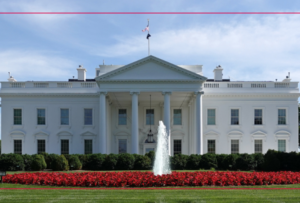
Prior to barring an AP reporter, the Trump administration launched Federal Communications Commission (FCC) investigations into public broadcasters NPR and PBS as well as the private television network CBS.
It has restricted press access to the Pentagon and arbitrarily removed freelance journalists from White House press pool briefings.
In a startling withdrawal of transparency, it removed scores of government webpages and datasets and barred many agency press teams from speaking publicly.
Also the president is personally suing multiple news organisations over their constitutionally protected editorial decisions.
The United States is ranked 55th out of 180 countries and territories, according to the 2024 RSF World Press Freedom Index.
Republished from Reporters Without Borders (RSF).
This content originally appeared on Asia Pacific Report and was authored by Pacific Media Watch.
This post was originally published on Radio Free.
In its eagerness to appease supporters of Israel, the media is happy to ride roughshod over due process and basic rights. It’s damaging Australia’s (and New Zealand’s?) democracy.
COMMENTARY: By Bernard Keane
Two moments stand out so far from the Federal Court hearings relating to Antoinette Lattouf’s sacking by the ABC, insofar as they demonstrate how power works in Australia — and especially in Australia’s media.
The first is how the ABC’s senior management abandoned due process in the face of a sustained lobbying effort by a pro-Israel group to have Lattouf taken off air, under the confected basis she was “antisemitic”.
Managing director David Anderson admitted in court that there was a “step missing” in the process that led to her sacking — in particular, a failure to consult with the ABC’s HR area, and a failure to discuss the attacks on Lattouf with Lattouf herself, before kicking her out.
To this, it might be added, was acting editorial director Simon Melkman’s advice to management that Lattouf had not breached any editorial policies.
Anderson bizarrely singled out Lattouf’s authorship, alongside Cameron Wilson, of a Crikey article questioning the narrative that pro-Palestinian protesters had chanted “gas the Jews”, as basis for his concerns about her, only for one of his executives to point out the article was “balanced and journalistically sound“.
That is, by the ABC’s own admission, there was no basis to sack Lattouf and the sacking was conducted improperly. And yet, here we are, with the ABC tying itself in absurd knots — no such race as Lebanese, indeed — spending millions defending its inappropriate actions in response to a lobbying campaign.
The second moment that stands out is a decision by the court early in the trial to protect the identities of those calling for Lattouf’s sacking.
Abandoned due process
The campaign that the group rolled out prompted the ABC chair and managing director to immediately react — and the ABC to abandon due process and procedural fairness. Yet the court protects their identities.
The reasoning — that the identities behind the complaints should be protected for their safety — may or may not be based on reasonable fears, but it’s the second time that institutions have worked to protect people who planned to undermine the careers of people — specifically, women — who have dared to criticise Israel.
The first was when some members — a minority — of a WhatsApp group supposedly composed of pro-Israel “creatives” discussed how to wreck the careers of, inter alia, Clementine Ford and Lauren Dubois for their criticism of Israel.
The publishing of the identities of this group was held by both the media and the political class to be an outrageous, antisemitic act of “doxxing”, and the federal government rushed through laws to make such publications illegal.
No mention of making the act of trying to destroy people’s careers because they hold different political views — or, cancel culture, as the right likes to call it — illegal.
Whether it’s courts, politicians or the media, it seems that the dice are always loaded in favour of those wanting to crush criticism of Israel, while its victims are left to fend for themselves.
Human rights lawyer and fighter against antisemitism Sarah Schwartz has been repeatedly threatened with (entirely vexatious) lawsuits by Israel supporters for her criticism of Israel, and her discussion of the exploitation of Australian Jews by Peter Dutton.
Opinion | Australian democracy and the rule of law is being damaged by the media’s willingness to abandon due process and attack those who criticise Israel, writes @bernardkeane.
Read it here: https://t.co/gpNuppn31l pic.twitter.com/AyxKdyVMG4
— Crikey (@crikey_news) February 11, 2025
Targeted by another News Corp smear campaign
She’s been targeted by yet another News Corp smear campaign, based on nothing more than a wilfully misinterpreted slide. She has no government or court rushing to protect her.
Meanwhile, Peter Lalor, one of Australia’s finest sports journalists (and I write as someone who can’t abide most sports journalism) lost his job with SEN because he, too, dared to criticise Israel and call out the Palestinian genocide. No-one’s rushing to his aide, either.
No powerful institutions are weighing in to safeguard his privacy, or protect him from the consequences of his opinions.
The individual cases add up to a pattern: Australian institutions, and especially its major media institutions, will punish you for criticising Israel.
Pro-Israel groups will demand you be sacked, they will call for your career to be destroyed. Those groups will be protected.
Media companies will ride roughshod over basic rights and due process to comply with their demands. You will be smeared and publicly vilified on completely spurious bases. Politicians will join in, as Jason Clare did with the campaign against Schwartz and as Chris Minns is doing in NSW, imposing hate speech laws that even Christian groups think are a bad idea.
Australian journalist Antoinette Lattouf was sacked from her job at ABC because she shared an Instagram post from @hrw in which the NGS accused Israel of using starvation as a weapon of war. She is now taking the broadcaster to court. pic.twitter.com/jRmQW2AAl3
— Saul Staniforth (@SaulStaniforth) February 11, 2025
Damaging the fabric of democracy
This is how the campaign to legitimise the Palestinian genocide and destroy critics of the Netanyahu government has damaged the fabric of Australia’s democracy and the rule of law.
The basic rights and protections that Australians should have under a legal system devoted to preventing discrimination can be stripped away in a moment, while those engaged in destroying people’s careers and livelihoods are protected.
Ill-advised laws are rushed in to stifle freedom of speech. Australian Jews are stereotyped as a politically convenient monolith aligned with the Israeli government.
The experience of Palestinians themselves, and of Arab communities in Australia, is minimised and erased. And the media are the worst perpetrators of all.
Bernard Keane is Crikey’s politics editor. Before that he was Crikey’s Canberra press gallery correspondent, covering politics, national security and economics. First published by Crikey.
This post was originally published on Asia Pacific Report.
Sulaymaniyah, Iraq, February 13, 2025—The Committee to Protect Journalists is alarmed by Kurdistan security forces’ assault on 12 news crews covering a February 9 protest by teachers and other public employees over unpaid salaries, which resulted in at least 22 journalists teargassed, two arrested, and a television station raided.
“The aggressive treatment meted out to journalists by Erbil security forces while covering a peaceful protest is deeply concerning,” said CPJ Program Director Carlos Martinez de la Serna, in New York. “We urge Iraqi Kurdistan authorities not to target journalists during protests, which has been a recurring issue.”
Kurdistan has been in a financial crisis since the federal government began cutting funding to the region after it started exporting oil independently in 2014. In 2024, the Federal Supreme Court ordered Baghdad to pay Kurdistan’s civil servants directly but ongoing disagreements between the two governments mean their salaries continue to be delayed and unpaid.
Since the end of Kurdistan’s civil war in 1998, the semi-autonomous region has been divided between the dominant Kurdistan Democratic Party (KDP) in Erbil and the Patriotic Union of Kurdistan (PUK) in Sulaymaniyah. While the KDP has discouraged the teachers’ protests, the PUK has sometimes supported them, including through affiliated media outlets.
At the February 9 protest, a crowd of teachers from Sulaymaniyah tried to reach Erbil, the capital, and were stopped at Degala checkpoint, where CPJ recorded the following attacks:
“One of them chambered a round [into his gun]. I tried to leave but one of them attempted to strike me with the butt of a rifle, hitting only my finger. Another grabbed my camera and took it,” Abdulhadi told CPJ.

“There are still wounds on my face from when I fell,” she told CPJ, adding that she was taken to hospital and given oxygen.
“I couldn’t see anything and was struggling to breathe. My cameraman and I lost consciousness for three hours,” Mariwan told CPJ.

“My face is still swollen, and I feel dizzy,” she told CPJ.
“We were placed on oxygen and prescribed medication,” reporter Ramyar Osman told CPJ, adding that camera operator Sayed Yasser was hit in the knee by a rubber bullet.
“I had an allergic reaction and my face turned red. I had to go to the hospital,” he said.
Raided and arrested

Abdulwahab Ahmed, head of the Erbil office of the pro-opposition Gorran Movement KNN TV, told CPJ that two unplated vehicles carrying Asayish officers followed KNN TV’s vehicle to the office at around 1:30 p.m., after reporters Pasha Sangar and Mohammed KakaAhmed and camera operator Halmat Ismail made a live broadcast showing the deployment of additional security forces by the United Nations compound, which was the protesters’ intended destination.
“They identified themselves as Asayish forces, forcibly took our mobile phones, and accused us of recording videos. They checked our social media accounts,” Sangar told CPJ.
KakaAhmed told CPJ, “They found a video I had taken near the U.N. compound on my phone, deleted it, and then returned our devices.”
In another incident that evening, Asayish forces arrested pro-PUK digital outlet Politic Press’s reporter Taman Rawandzi and camera operator Nabi Malik Faisal while they were live broadcasting about the protest and took them to Zerin station for several hours of questioning.
“They asked us to unlock our phones but we refused. Then they took our phones and connected them to a computer,” Rawandzi told CPJ, adding that his phone was now operating slowly and he intended to replace it.
“They told us not to cover such protests,” he said.
CPJ phoned Erbil’s Asayish spokesperson Ardalan Fatih but he declined to comment.
This content originally appeared on Committee to Protect Journalists and was authored by Committee to Protect Journalists.
This post was originally published on Radio Free.
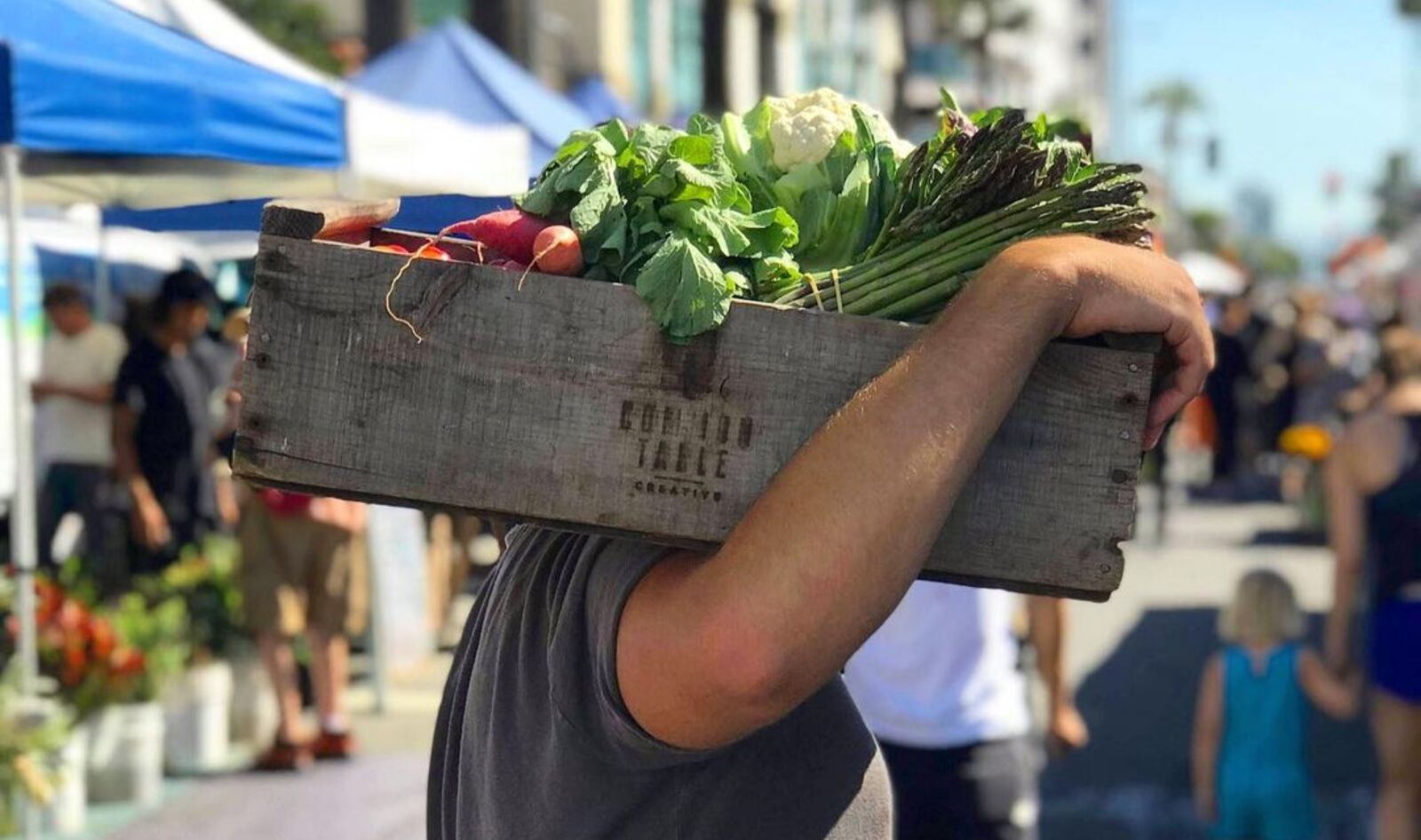
“Feeding Tomorrow is the people who grow food and the people who eat food working together to transform the entire ecology of the planet,” says farmer Mark Shepard in the documentary Feeding Tomorrow, which was released on January 23, 2024.
But Feeding Tomorrow is not alone in its mission to reshape the food system. One year after its release, the 2025 documentary Food for Thought further amplifies the conversation, exploring the rapid growth of the plant-based industry and the ethical and environmental factors driving its rise.
Feeding Tomorrow is available for streaming now on Apple TV and Amazon Prime, while you can find the Food for Thought trailer on YouTube.
The award-winning Feeding Tomorrow guides viewers through the stark reality of our current food system, which prioritizes fast and cheap production at the cost of ecosystems, climate stability, and human health. But, as the name suggests, the key focus of Feeding Tomorrow is the many solutions that are already available to us when it comes to fixing this broken food system.
Right now, the livestock industry is responsible for 14.5 percent of global emissions, and it’s also a leading driver of deforestation and habitat destruction. But even in crop farming, agriculture is replacing natural vegetation, leading to soil erosion and vast land degradation. In the last century and a half, 50 percent of the planet’s topsoil—where most of the soil’s nutrients are held, and where seeds germinate and plants grow—has been lost.
Feeding Tomorrow proves it doesn’t have to be this way. Shepard, one of the central figures of the film, is renowned for taking a worn-out Wisconsin farm and turning it into one of the most ambitious and advanced permaculture sites in the whole of North America. Instead of depleting the land, Shepard’s approach helps to regenerate it. Under permaculture practices, ecosystems flourish, and they become adaptive and resilient, too, and all of this helps to create a healthier, more sustainable base for food production.
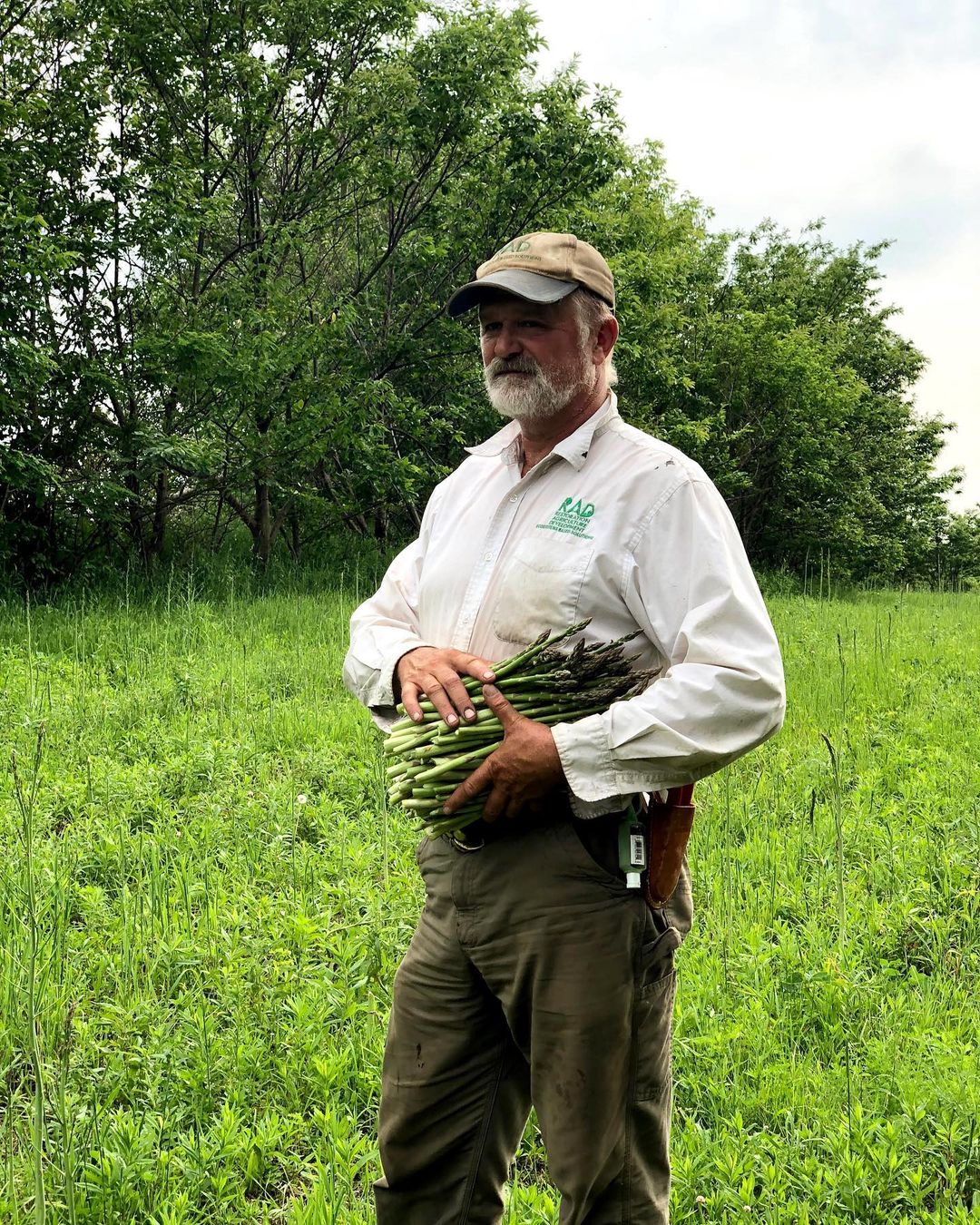 Feeding Tomorrow/Instagram
Feeding Tomorrow/Instagram
The film also follows nutritionist Lisa McDowell, who built the first working hospital farm to emphasize the potential medicinal benefits of plant-based foods, as well as Thabiti Brown, an educator with a holistic approach that prioritizes the health and well-being of children. Because, as well as being good for the earth, localized, plant-forward approaches to food are good for our health, too.
Multiple studies have suggested that following a whole-food, plant-based diet is one of the healthiest ways to live. Plus, locally grown food is also fresher and more nutritious.
Our current food system, however, is likely making us more prone to disease. This is demonstrated in areas where fresh, healthy food is harder to access (commonly called food deserts), where rates of heart disease and diabetes are significantly higher.
“Without a ton of resources or connections, [Shepard, McDowell, and Brown] all set out to create a new model and show us that we have many of the solutions to the biggest environmental, health, and social problems at hand, today,” Feeding Tomorrow filmmaker Oliver English told VegNews.
His fellow filmmakers include cinematographers Simon English and Mark Miller, entrepreneur Rebecca Walter, influencer Ethan Hethcote, and plant biologist James Bellis.
With Feeding Tomorrow, the team hopes to bring “large-scale, systemic awareness” to the issues in our food system, as well as “galvanize public opinion and support” for the solutions we have. For many of us, showing that support can be as simple as changing the way we shop and the foods we buy.
“For everyday consumers, it means making consumption choices when and where we can,” English said. This includes actions like going to farmers’ markets, eating more plants, and supporting local, organic, and regenerative agriculture when possible.
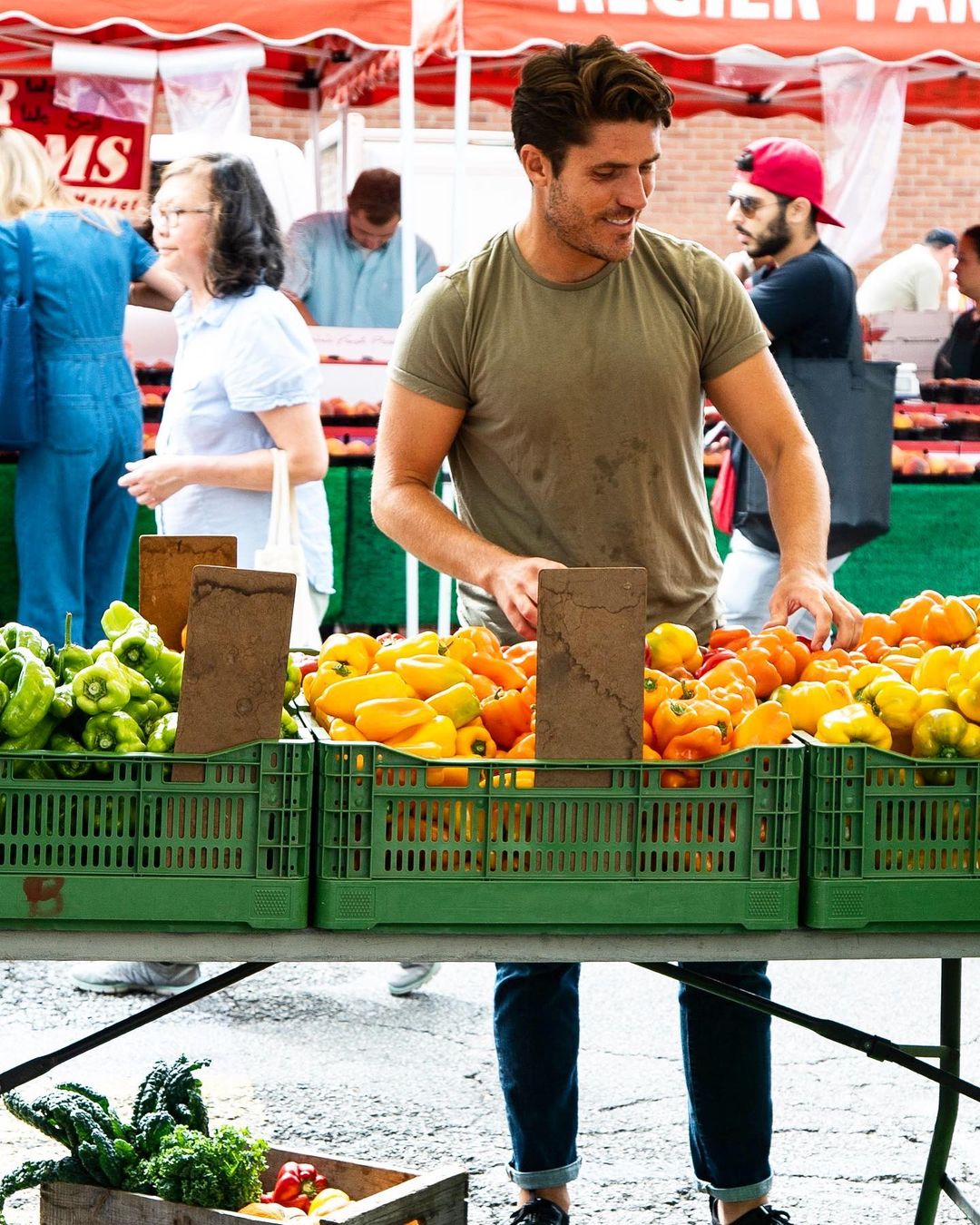 Oliver English
Oliver English
But public support alone isn’t enough. When it comes to transforming the food system, policy changes are imperative. “From the top down, we need to influence policymakers from the local to the national level to magnify our efforts by encouraging and paying farmers to transition to holistic, regenerative systems of food production,” he added.
The film is partnered with the American Farmland Trust, the National Resource Defense Council, and Regenerate America, all of which have initiatives to influence the Farm Bill—the package of legislation that impacts food production in the US—to support more regenerative farming models across the country.
“As we take a step back and look at all of the interconnected challenges we face, from agriculture to healthcare and education, I think it’s important that we approach the solutions with a holistic lens,” English said. “Rather than the segmented, isolated ‘apply a short-term bandaid’ kind of lens we have been using to address many of the challenges we face.”
After making Feeding Tomorrow, English remains hopeful and inspired that change can happen. The next step is to get all of the viewers on board.
“Visiting and learning from all of these farmers has shown me firsthand how truly powerful our food choices are,” he said. “And it begins with where we are getting our food, the farms and farmers we are supporting, and what we decide to eat.”
“It includes putting plants at the center of your plate, and eating lots of colors,” he continued. “We all have the power to switch the paradigm with how we vote with our forks every day.”
Similarly, Food for Thought, directed by Giles Alderson and featuring actor and activist Dan Richardson, takes audiences on a global journey to examine how plant-based innovations and changing attitudes are reshaping the way we eat.
The film, which premiered at London’s Royal Geographical Society where it was introduced by actor and activist Peter Egan, also features interviews with experts in the industry, like Ethan Brown (the founder of vegan meat brand Beyond Meat) and Philip Lymbery (the CEO of Compassion in World Farming). It also offers a compelling look at the potential of plant-based diets to mitigate environmental destruction, improve animal welfare, and strengthen global food security.
 Food for Thought
Food for Thought
“It is an incredible journey,” Alderson said, per Animal Rights Watch. “If we can make people eat less meat because of it, then I will be overjoyed.” Richardson added in a statement that he wanted the film to “be positive and uplifting.”
Ultimately, whether through the lens of regenerative farming or plant-based innovation, both Feeding Tomorrow and Food for Thought deliver a shared message: we must urgently and radically transform our relationship with food.
“We are at a fundamental turning point in the history of our food system,” said English. “We are either going to start to turn the ship around in a big way, growing a more just and regenerative food system, or we are going to continue to suffer increasingly devastating consequences around the world.”
This post was originally published on VegNews.com.
Russia, Turkey and Egypt also among worst perpetrators of transnational repression around the globe
A quarter of the world’s countries have engaged in transnational repression – targeting political exiles abroad to silence dissent – in the past decade, new research reveals.
The Washington DC-based non-profit organisation Freedom House has documented 1,219 incidents carried out by 48 governments across 103 countries, from 2014 to 2024.
Continue reading…This post was originally published on Human rights | The Guardian.
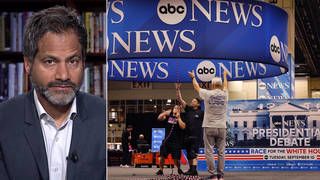
We look at the Trump administration’s escalating attacks on press freedom, and how the media has responded with bended knee in some cases, with Jameel Jaffer, director of the Knight First Amendment Institute at Columbia University. The Trump administration has threatened journalists and media outlets for their coverage, and the Federal Communications Commission is investigating PBS and NPR over its funding sources. Meanwhile, a number of major news organizations face accusations of surrendering to Trump’s threats. In December, ABC settled a defamation suit brought by Trump by making a $15 million donation to his future presidential library. CBS’s parent company Paramount is reportedly in talks to settle a multibillion-dollar lawsuit filed by Trump, who accused 60 Minutes of deceptively editing an interview with Kamala Harris. Trump initially sought $10 billion in the lawsuit and is now seeking $20 billion. “What I see here is media organizations that have the power to fight back against Trump but aren’t doing it. I think that’s a failure of courage,” says Jaffer. “Every time one of those media organizations settles a case, the next organization finds it more difficult to resist Trump.”
This content originally appeared on Democracy Now! and was authored by Democracy Now!.
This post was originally published on Radio Free.